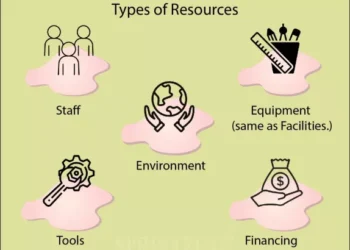If you’ve sidestepped marketing attribution models, rest assured you are not alone. Most people skim the surface of this topic or avoid it altogether simply because it has some complexity. This is your inside look at marketing attribution models with a focus on how they are used at businesses and marketing companies.
Explaining Marketing Attribution Models
Marketing attribution models are an efficient means of gauging the value of marketing channels. Such models provide businesses with insight into which marketing channels are enhancing the customer journey. Industry professionals often refer to the credits of attribution modeling. Such credits are assigned to specific touchpoints and marketing channels that pave paths toward conversions.
The purpose of attribution modeling is to monitor and study how individual marketing channels are functioning. When properly used, these tools help businesses better identify the marketing channels and touchpoints that are most effective at driving conversions. Attribution modeling assigns credits to individual channels, helping to hike conversions through the identification of variables along the buyer’s journey that have the potential for improvement.
Why Attribution Models Are So Important
Start taking a close look at attribution models at your business and you’ll find they provide a litany of benefits. For one, attribution models enhance the buyer journey. An understanding of target buyers is essential for understanding what drives a customer toward converting. Use attribution modeling the right way and you’ll pinpoint low-performing channels, creating an opportunity to tweak them accordingly for improved traffic flow and sales.
Attribution modeling also helps businesses better spend marketing dollars. Marketing budgets are limited, meaning businesses that strategically allocate their funds will emerge with more market share. Tap into the power of attribution modeling and you’ll better understand the optimal ways of spending limited marketing dollars, even if that means eliminating or minimizing channels that are not converting.
Once you’ve identified the channels most likely to convert members of the audience, you can tailor your marketing content based on those individual channels and the audience members who use them. Let’s take a quick look at the different attribution models.
Consider Different Attribution Models
Marketing attribution models are highly unique yet all serve the same underlying purpose of helping businesses better select avenues to connect with customers. As an example, last touch attribution models are one of the most popular. In this model, full credit is given to the previous touchpoint one had with the campaign before converting.
Alternatively, first touch attribution modeling provides the entirety of credit for conversion to the initial touchpoint. 100% of the credit is given to the website as this is where the customer journey began. This basic model is sufficient for businesses that have a quick buying cycle in which customers tend to make a purchase relatively soon after learning of a business.
Linear Attribution Modeling
The linear model equally credits all marketing touchpoints and channels used by the customer prior to conversion. As an example, if the customer receives an email newsletter, and visited a social platform and the website, credits are given to each.
Position-based Attribution Modeling
Position-based attribution modeling, also referred to as the U-shaped model, transmits credit across the initial and final touchpoints. The vast majority of businesses and marketers that use position-based attribution modeling give 40% of the credit to the initial touchpoint and 40% to the final touchpoint. The remaining 20% is dispersed across the touchpoints.
If your company has multiple touchpoints prior to the typical point of conversion, the position-based attribution model is ideal as it empowers you to view each individual touchpoint, highlighting those that are outperforming the rest.
Time-Decay Attribution Model
Last but not least is the time-decay attribution model. This model credits the channels and touchpoints yet also considers the length of time an individual spends at each of those touchpoints. Such a model empowers advertisers to identify the channels that are performing well and also pinpoint those that are underperforming.
Industry professionals agree the touchpoints that are closest to the point at which prospects convert are the highest in value. However, the time-decay attribution model is not optimal for businesses with short sales cycles. If your business has a lengthy sales cycle, the model is worth considering as it identifies the specific channels that converted customers spent most of their time using prior to the sale.
Consider Using Multiple Attribution Models
Business owners and managers often ask marketing professionals if one attribution model is superior. The optimal attribution model for one business is not guaranteed to be ideal for the next. The model that is best for your enterprise hinges on a number of factors ranging from customer goals to the number of stages in the marketing funnel and more.
It is possible to use several attribution models at the same time yet doing so requires additional analysis. Extend your analysis to multiple models in unison and you’ll obtain sales cycle insight that helps you determine how much each channel impacts sales. When used correctly, attribution modeling is a tool that reinforces overarching marketing campaigns for sales success.







